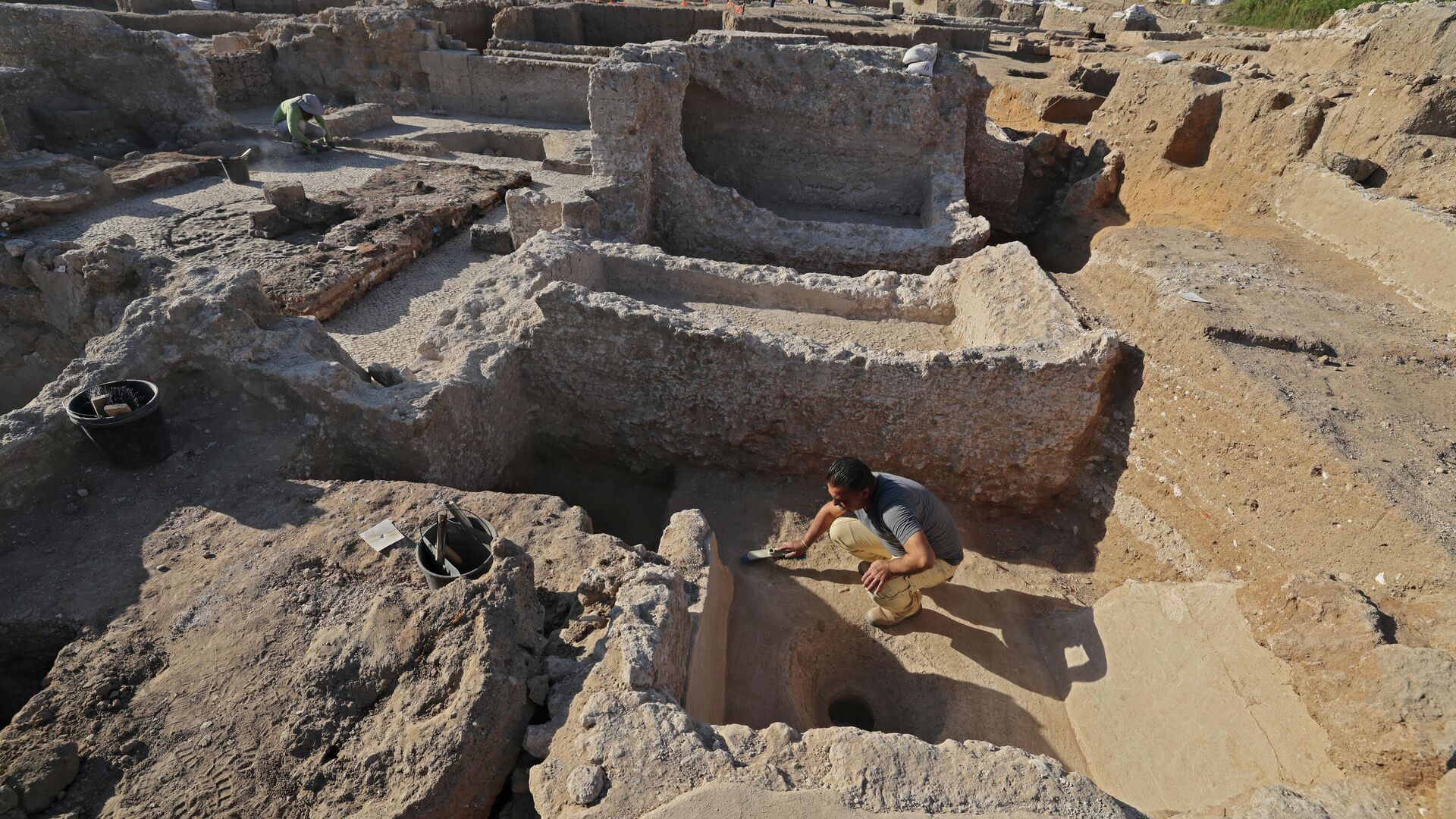https://sputnikglobe.com/20211103/a-hangover-cure-for-the-ages-byzantine-era-gold-ring-discovered-at-israeli-winery-1090430471.html
A Hangover Cure for the Ages: Byzantine-Era Gold Ring Discovered at Israeli Winery
A Hangover Cure for the Ages: Byzantine-Era Gold Ring Discovered at Israeli Winery
Sputnik International
Archeologists have uncovered a gold ring fitted with an amethyst stone in Yavne, Israel, dating from the Byzantine period. 03.11.2021, Sputnik International
2021-11-03T01:51+0000
2021-11-03T01:51+0000
2021-11-03T01:48+0000
archeology
israel
israeli antiquities authority
https://cdn1.img.sputnikglobe.com/img/07e5/0a/0c/1089851003_0:142:3071:1869_1920x0_80_0_0_4c4a998df352e2e8c254b5b2786b05c1.jpg
The ring, according to archeologists, was found at a dig site that dates to the 7th century CE, but it could be up to four centuries older. Amir Golani, an Israel Antiquities Authority (IAA) expert noted that “the person who owned the ring was affluent, and the wearing of the jewel indicated their status and wealth,” adding that it could have belonged to either a man or a woman.While the piece of jewelry signified wealth, it could have had another purpose, as a hangover cure. In ancient Greece, an amethyst was believed to be an antidote to drunkenness. The Greek word ‘amethystos’ can be translated as ‘not drunken.’ Many wine glasses were carved out of amethyst for this specific reason.Fueling speculation over the ring’s purpose is where it was found. The excavation site in Yavne is located at a massive winery where the largest Byzantine-era wine press to date was discovered. The ring was only 150 meters from a storehouse that could have stored wine jars before they were used.The winery at Yavne is thought to have produced the regional wines known as Gaza and Ashkelon, after the seaports from which they were distributed. The complex is believed to have produced up to two million liters of wine a year.
israel
Sputnik International
feedback@sputniknews.com
+74956456601
MIA „Rossiya Segodnya“
2021
News
en_EN
Sputnik International
feedback@sputniknews.com
+74956456601
MIA „Rossiya Segodnya“
Sputnik International
feedback@sputniknews.com
+74956456601
MIA „Rossiya Segodnya“
archeology, israel, israeli antiquities authority
archeology, israel, israeli antiquities authority
A Hangover Cure for the Ages: Byzantine-Era Gold Ring Discovered at Israeli Winery
Archeologists have uncovered a gold ring fitted with an amethyst stone in Yavne, Israel, dating from the Byzantine period.
The ring,
according to archeologists, was found at a dig site that dates to the 7th century CE, but it could be up to four centuries older. Amir Golani, an Israel Antiquities Authority (IAA) expert noted that “the person who owned the ring was affluent, and the wearing of the jewel indicated their status and wealth,” adding that it could have belonged to either a man or a woman.
While the piece of jewelry signified wealth, it could have had another purpose, as a hangover cure. In ancient Greece, an amethyst was believed to be an antidote to drunkenness. The Greek word ‘amethystos’ can be translated as ‘not drunken.’ Many wine glasses were carved out of amethyst for this specific reason.
Fueling speculation over the ring’s purpose is where it was found. The excavation site in Yavne is located at a massive winery where the largest Byzantine-era wine press to date was discovered. The ring was only 150 meters from a storehouse that could have stored wine jars before they were used.
Elie Haddad, directing the excavation on behalf of the IAA, said, “It is possible that the splendid ring belonged to the owner of the magnificent warehouse, to a foreman, or simply to an unlucky visitor, who dropped and lost their precious ring, until it was finally discovered by us.”
The
winery at Yavne is thought to have produced the regional wines known as Gaza and Ashkelon, after the seaports from which they were distributed. The complex is believed to have produced up to two million liters of wine a year.

